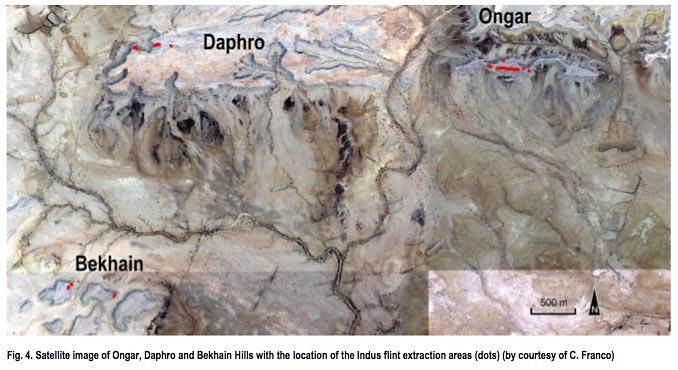A report on the largest archaeological site in South Asia, an industrial-scale enterprise that goes back hundreds of thousands of years: flint mining.
Author's Abstract
The surveys carried out in Lower Sindh (Pakistan) during the last five years have revealed that the Rohri Hills flint sources were not the only ones to be exploited during the flourishing of the Indus Valley Bronze Age. Although little is known of the lithic raw materials exploitation during the IIIrd mill. cal BC, the Ongar discoveries have opened new perspectives to the knowledge of the economic strategy of the Indus Civilisation. Furthermore, a reanalysis of the distribution pattern and orientation of the Rohri Hills Indus flint quarries seems to indicate their grouping into clusters along the wadis flowing eastwards. This would suggest that, at least the Shadee Shaheed, Mature Indus flint quarries, were mainly exploited by people whose settlements were located along the terraces of the Nara-Hakra watercourse, which, according to the results obtained from the surveys carried out in Cholistan (Bahawalpur state), undoubtedly represented the most intensively settled river system from the middle IVth mill. cal BC onwards.

